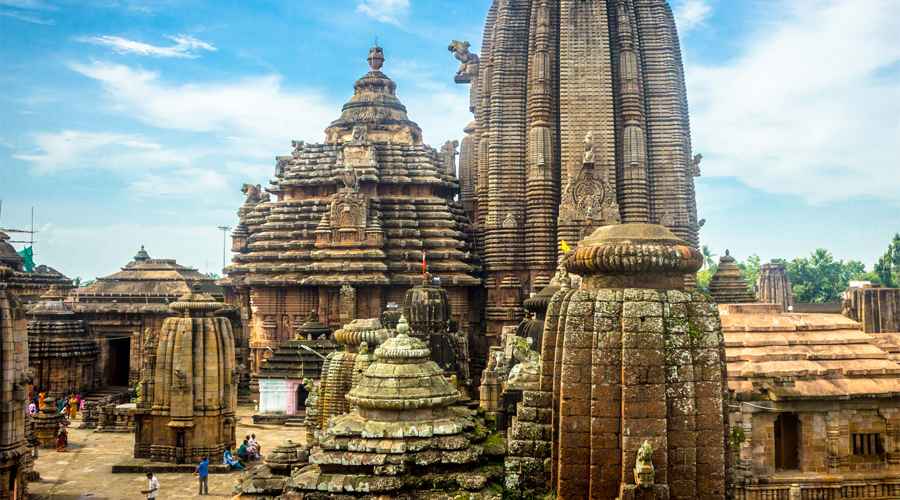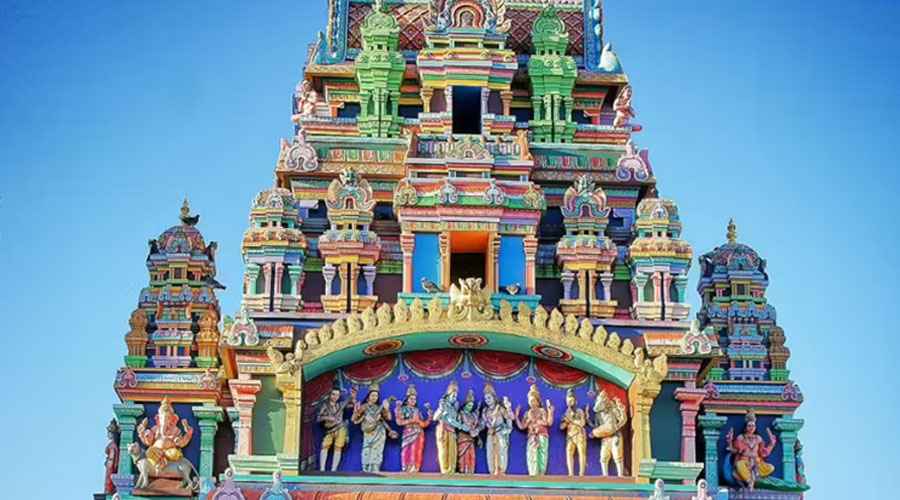India’s cultural landscape is dotted with temples that stand not only as centers of devotion but also as architectural marvels narrating centuries of history. Among these jewels, the Lingaraj Temple of Bhubaneswar, Odisha, holds a prominent place. Revered as one of the finest examples of Kalinga architecture, this 11th-century shrine is dedicated to Lord Shiva and attracts pilgrims, historians, and art lovers alike. Majestic, spiritual, and historically significant, Lingaraj Temple is often called the crown jewel of Bhubaneswar — a city that itself boasts more than 700 temples.
Historical Roots and Legends
The origins of the Lingaraj Temple can be traced back to the Somavamsi dynasty in the 11th century, although parts of the shrine existed as early as the 7th century under the rule of the Keshari kings. Later, the Ganga dynasty contributed to its development. This continuity of patronage over centuries explains both the scale and grandeur of the complex.
According to legends, Bhubaneswar was once called Ekamra Kshetra because of a vast mango grove. Here, Lord Shiva chose to reside permanently as the presiding deity, making the region sacred. The Linga enshrined in the temple is said to be a form of Harihara, combining both Shiva and Vishnu. This unique aspect highlights the temple’s inclusive religious philosophy and its appeal to followers of both Shaivism and Vaishnavism.
The Shiva Purana, Brahma Purana, and Skanda Purana narrate stories associated with the temple. These scriptures describe Lingaraj as the manifestation of the cosmic union of Lord Vishnu and Lord Shiva, reaffirming its position as a temple of unity in diversity.
Architectural Splendor
The Lingaraj Temple is considered the pinnacle of Kalinga-style temple architecture, which flourished in Odisha between the 7th and 13th centuries. The temple complex spreads across 250,000 square feet, surrounded by massive walls that make it look like a fortress of spirituality.
The main temple structure, rising to about 180 feet, dominates the skyline of Bhubaneswar. Its curving spire or Shikhara, adorned with intricate carvings, demonstrates the geometric precision and artistic detailing typical of Kalinga architecture.
The temple complex is divided into four main chambers:
- Vimana (sanctum sanctorum) – where the self-manifest Shivalinga resides.
- Jagamohana (assembly hall) – used for congregational gatherings.
- Natamandira (festival hall) – a space for dance, music, and celebrations.
- Bhoga-mandapa (hall of offerings) – where devotees present food offerings to the deity.
Sculptures of deities, mythological figures, animals, and floral motifs embellish the walls, exuding divine symbolism. The carvings reflect not only artistic mastery but also the socio-cultural life of the times, with depictions of royal processions, daily rituals, and celestial beings.
The Presiding Deity
The main deity of the temple, known as Lingaraj, is worshipped in the form of a Swayambhu Linga (self-originated stone). What makes this shrine distinctive is that the Linga is worshipped as both Shiva and Vishnu together. Whereas the central figure is a Shiva lingam, the temple also depicts aspects of Vishnu, symbolizing unity between Shaivism and Vaishnavism.
Other shrines within the temple complex are dedicated to deities such as Parvati, Ganesha, Kartikeya, and Vishnu. This confluence of traditions mirrors the inclusive spiritual ethos of the temple.
Rituals and Religious Practices
The temple follows a highly elaborate daily ritual schedule, rooted in traditions that have persisted for centuries. The day begins with the Mangala Arati at dawn, followed by Abhisheka (ritual bathing of the deity), Bhoga (offerings), and evening prayers. Each day sees devotees thronging to perform darshan of the deity and participate in these sacred rituals.
Among the numerous observances, the Maha Shivaratri festival is the most significant. On this occasion, lakhs of devotees gather within and around the temple. Fasting, all-night vigil, and chanting in praise of Lord Shiva mark the festival. The temple is illuminated beautifully, creating a captivating spiritual atmosphere.
Another unique celebration is the Chandan Yatra, in which the deities are taken out in processions on boats in a nearby tank, symbolizing divine recreation. Seasonal festivals like Pashupata Sankranti and Rath Yatra also draw large gatherings, reaffirming the temple’s role as a vibrant center of living traditions.
The Bindu Sagar Connection
Adjacent to the temple lies the Bindu Sagar Lake, regarded as one of the most sacred water bodies in Bhubaneswar. According to legend, waters from every holy river in India converge here, endowing it with immense spiritual purity. Ritual baths in the Bindu Sagar are believed to purify the devotee and prepare them for temple darshan. During major festivals, deities from the Lingaraj Temple are ceremonially brought to the lake, reinforcing the temple’s bond with this sacred water.
The Role in Bhubaneswar’s Identity
Known as the Temple City of India, Bhubaneswar derives much of its spiritual identity from the Lingaraj Temple. This temple serves not only as the heart of religious life but also as the focal point of Odisha’s cultural narrative. Its architecture inspired countless temples across the region, setting a benchmark for centuries of artistic innovations.
The temple’s presence also anchors Bhubaneswar as part of the holy golden triangle pilgrimage of Odisha, along with Puri’s Jagannath Temple and Konark’s Sun Temple. Together, they reflect the glorious religious and artistic traditions of the state.
Preservation and Access
The Lingaraj Temple is under the protection of the Archaeological Survey of India. Despite its age, efforts have ensured the preservation of its intricate stonework. Unlike many ancient temples, Lingaraj remains a living temple, continuing to sustain age-old rituals that connect devotees to their cultural roots.
It is important to note, however, that non-Hindus are not allowed inside the sanctum or even within the complex. They can, however, view the temple’s majestic structure from elevated platforms around the premises, especially near the Bindu Sagar.
Conclusion
The Lingaraj Temple is more than just a monument; it is a spiritual epicenter where history, devotion, and art coexist seamlessly. Its towering spire, intricate carvings, and deeply rooted traditions make it a testimony to the brilliance of Kalinga architecture. But perhaps more importantly, it represents the fusion of faiths, as devotees of both Shiva and Vishnu revere the deity within its walls.
For devotees, visiting Lingaraj Temple is an act of immense spiritual fulfillment. For historians and art enthusiasts, it offers insight into the genius of Odisha’s temple builders. And for the city of Bhubaneswar, it stands as the eternal guardian of its cultural and spiritual identity.
In every sense, the Lingaraj Temple is not just a sacred site from the past—it is a living heritage that continues to radiate faith and artistic glory in the present, inspiring countless generations.



